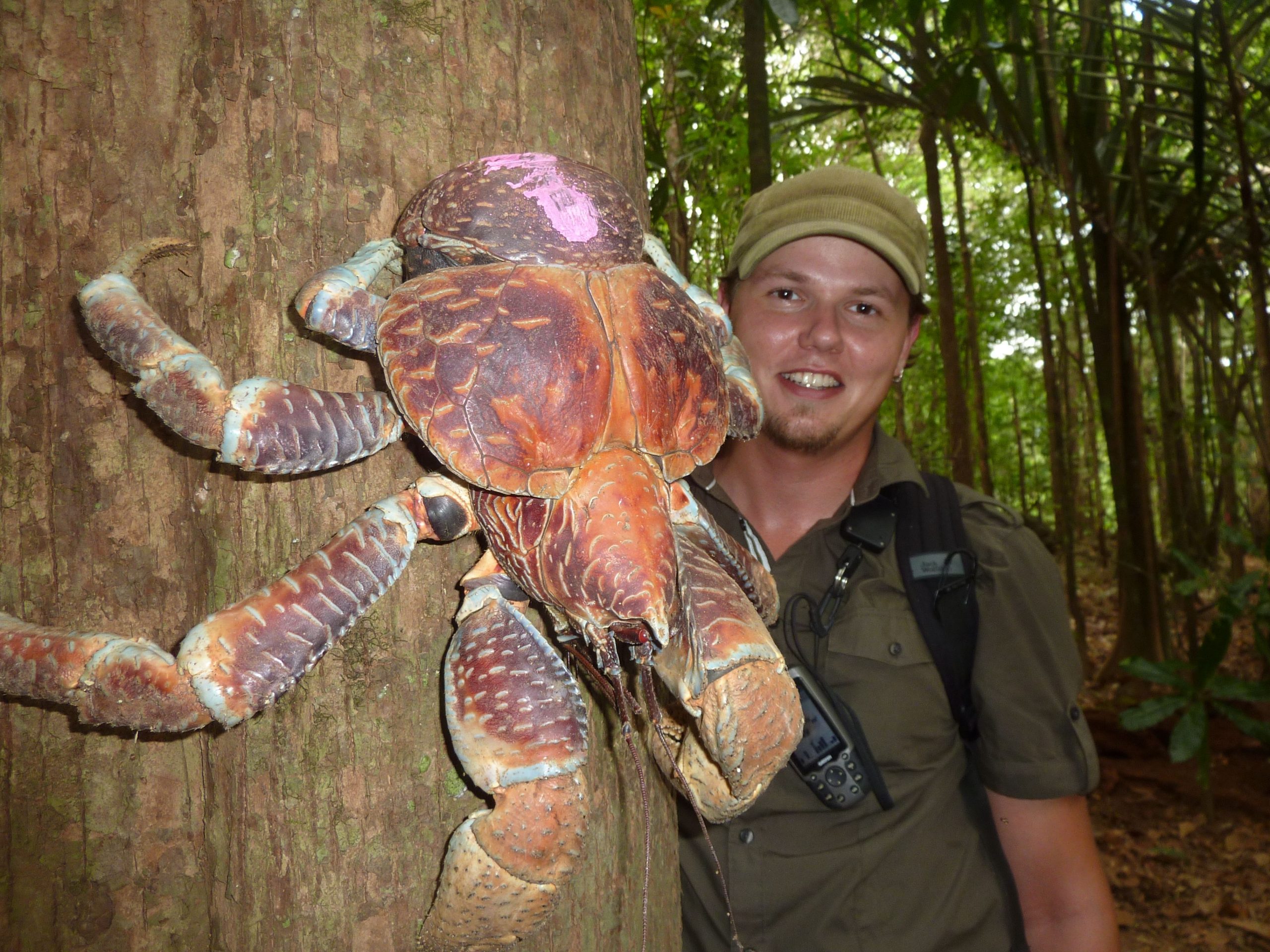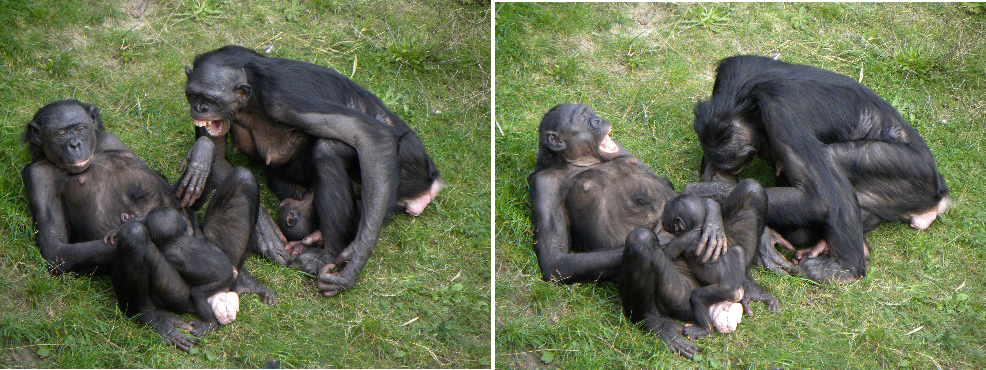PLOS ONE Zoo: Giant robber crabs, pandas, bonobo apes and more!
Whether it is unusual food habits, fighting over females, or snacking between meals, research published in PLOS ONE this week spans these and more diverse animal behaviors. These studies don’t aim to use animal research to interpret human behavior, but their results might nonetheless evoke navel-gazing for us humans.
For example, one study published today uses GPS trackers to reveal an internal ‘GPS’ in giant robber crabs, the world’s largest land-living arthropod. Researchers tracking the enormous coconut-eating crabs, whose bodies can grow bigger than a man’s head, with legs up to a meter in length, have identified previously unknown navigation and homing skills in this species.
Like GPS units, peculiar food choices are also not unique to humans. An ancient bear’s preference for munching on hard plant materials like bamboo has revealed that it might be the oldest known ancestor of the giant panda. The bear’s fossil tooth and jaw were discovered in Spain and are described in another study.
People and other animals go to great lengths to develop elaborate courtship rituals or even physical features, but few will fight to the death over a female. Researchers have found that one species of Australian grasshopper is an exception. Males of the species will resort to grappling, kicking and biting in aggressive fights, and the behaviors exhibited depend on whether the male is challenging another or defending himself (Watch a video here).
Research on bonobo apes tackles a behavior that is likely more familiar to most of us: contagious yawning. The authors find that just like humans, bonobos are more likely to yawn in response to one another’s yawns when they are more closely related than when they are unrelated to the first yawner, and when the first individual to yawn is a senior member of the group. Among other findings, their results support the idea that senior group members play a key role in affecting the emotional states of others.
Defining emotions in non-human species is always challenging, but researchers are beginning to understand what signs of boredom might look like in at least one species, mink. A study published today shows that mink without enough interesting things to do tend to snack on food treats more often between meals, and lie awake for longer periods of time without falling asleep. Providing animals with sufficient stimulation is considered critical to their well-being, but defining what might be considered adequate is still a challenge. As the authors of this study say, “Many people believe that farm and zoo animals in empty enclosures get bored, but since the animals can’t tell us how they feel, we can only judge this from seeing how motivated they are for stimulation.”
If all these behaviors have you thinking, “They’re just like us!” think again. Understanding the animal behaviors described in these studies is only a first step towards sharing human spaces with them, whether in zoos, on farms or on an island off the Indonesian coast.
Citations:
Krieger J, Grandy R, Drew MM, Erland S, Stensmyr MC, et al. (2012) Giant Robber Crabs Monitored from Space: GPS-Based Telemetric Studies on
Christmas Island (Indian Ocean). PLoS ONE 7(11): e49809. doi:10.1371/journal.pone.0049809
Abella J, Alba DM, Robles JM, Valenciano A, Rotgers C, et al. (2012) Kretzoiarctos gen. nov., the Oldest Member of the Giant Panda Clade. PLoS ONE 7(11): e48985. doi:10.1371/journal.pone.0048985
Umbers KDL, Tatarnic NJ, Holwell GI, Herberstein ME (2012) Ferocious Fighting between Male Grasshoppers. PLoS ONE 7(11): e49600. doi:10.1371/
journal.pone.0049600
Demuru E, Palagi E (2012) In Bonobos Yawn Contagion Is Higher among Kin and Friends. PLoS ONE 7(11): e49613. doi:10.1371/journal.pone.0049613
Meagher RK, Mason GJ (2012) Environmental Enrichment Reduces Signs of Boredom in Caged Mink. PLoS ONE 7(11): e49180. doi:10.1371/journal.pone.0049180
Photo credits:
top: Giant robber crabs on Christmas Island, Bill S. Hannson, Jakob Krieger, Steffen Harzsch
below: Empathetic yawning in bonobos, Elisa Demuru


